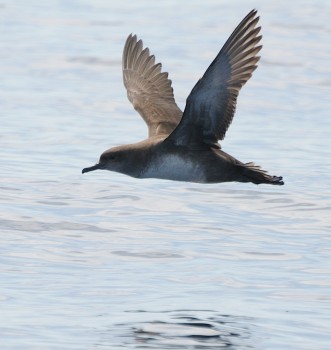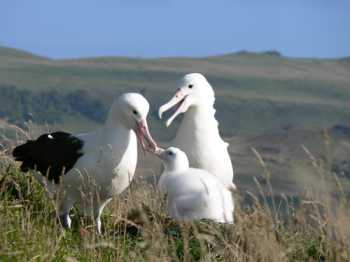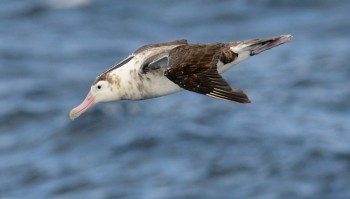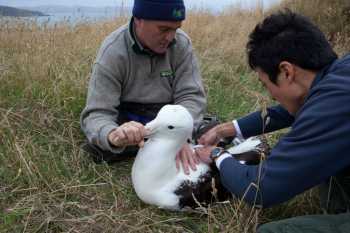Tomohiro Deguchi (Division of Avian Conservation, Yamashina Institute for Ornithology, Abiko, Japan) and colleagues have published in the journal Animal Conservation on the results of a translocation exercise with Short-tailed Albatrosses Phoebastria albatrus.
The paper’s abstract follows:
“Restoration or establishment of colonies using translocation and hand-rearing can be an effective tool for conserving birds. However, well-designed post-release evaluation studies for long-lived species are rarely implemented. We investigated the attendance and breeding attempts of hand-reared short-tailed albatross (STAL) Phoebastria albatrus chicks (n = 69) translocated to a historic breeding island in the Ogasawara Islands, 350 km from the source colony, for 8 consecutive years after the first translocation. Thirty-nine percent of hand-reared birds (n = 27) returned to the translocation site at least once per breeding season, of which 67% (n = 18) also visited the natal island. The number of hand-reared birds returning each year was lower at the translocation site (mean: 0.3–2.3 birds per day) versus the natal island (0.4–3.5 birds per day). The first breeding attempt occurred 5 years after the first translocation. Three pairs (producing three chicks) recruited to the translocation site or neighboring islands and five pairs (producing nine chicks) recruited to the natal island by 8 years after the first translocation. Every hand-reared bird that raised a chick paired with a naturally reared bird. At the translocation site and neighboring islands, two hand-reared birds paired with a mate from the natal island and a breeding colony 1850 km away, respectively, while the parents of the third chick were unknown. Their breeding at the translocation region was observed among conspecific social attractants (decoys, audio playback; one pair) or congeners (two pairs). Our preliminary results suggest that even though more translocated and hand-reared albatrosses visited and recruited to their natal island compared to the translocation site, the early re-establishment of breeding by short-tailed albatrosses in the Ogasawara Islands 80 years after extirpation would not have occurred without the initial translocation effort. Further study is needed, however, to fully understand formation of breeding colonies beyond conspecific attraction and philopatry.”
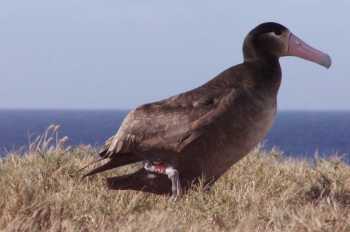
A colour-banded Short-tailed Albatross translocated as a chick returns to Mukojima
Read more about the translocation project in ACAP Latest News here.
With thanks to Tomohiro Deguchi.
Reference:
Deguchi, T., Sato, F., Eda, M., Izumi, H., Suzuk , H., Suryan, R.M., Lance, E.W., Hasegawa, H. & Ozaki, K. 2016 Translocation and hand-rearing result in short-tailed albatrosses returning to breed in the Ogasawara Islands 80 years after extirpation. Animal Conservation doi:10.1111/acv.12322.
John Cooper, ACAP Information Officer, 30 November 2016
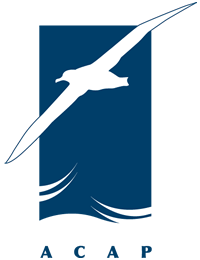
 English
English  Français
Français  Español
Español 